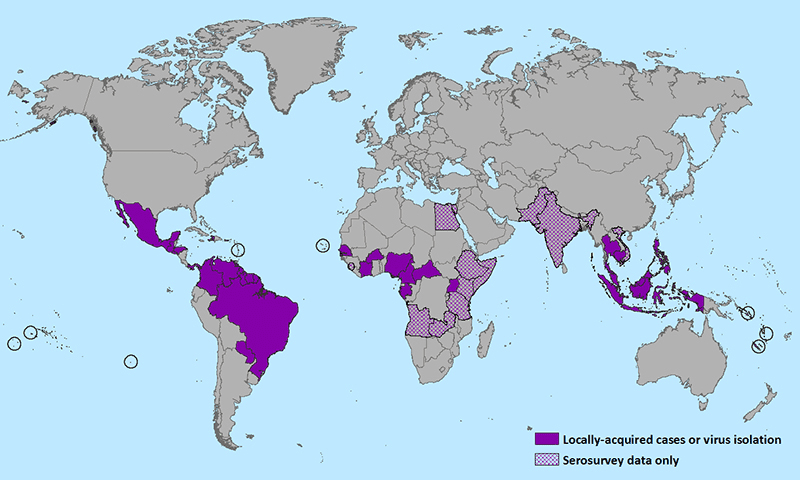The Zika outbreak in South America is spreading more and more, reaching pandemic levels. As a response, the World Health Organization has declared the ongoing outbreak a ‘Public Health Emergency of International Concern’. Thousands of babies have been born with drastic abnormalities due such as microcephaly and Guillain–Barré syndrome as a result of the disease.
WHO director general, Margaret Chan called Zika an “extraordinary event” that requires a global coordination effort to deal with.
“I am now declaring that the recent cluster of microcephaly and other neurological abnormalities reported in Latin America following a similar cluster in French Polynesia in 2014 constitutes a public health emergency of international concern.”
As we mentioned here and here, we’re going through the world’s worst utbreak of Zika virus in history. It all started in April 2015, but only in the end of 2015 did things start to really get dire. The virus is mainly spread by the Aedes aegypti mosquito, which is commonly found throughout the tropical and subtropical Americas, but also by Aedes albopictus, “Asian tiger” mosquitoes that now have become widespread up to the Great Lakes area of the United States. The main symptoms of the disease are not that hard and hospitalization is basically never necessary, but the diseases does have some dramatic consequences.
When pregnant women contact the virus, they have a high chance of giving birth to babies with defects such as microcephaly and Guillain–Barré syndrome. Microcephaly is a neurodevelopmental disorder defined by a very small head size. Guillain–Barré syndrome (GBS) is a rapid-onset muscle weakness as a result of damage to the peripheral nervous system. But why this happens is still a matter of debate.
Dr. Yoel Sadovsky, Professor of Obstetrics, Gynecology and Reproductive Sciences at the University of Pittsburgh said:
“It is possible that Zika infection causes birth defects during the first trimester, as many of the steps involving organ development are early pregnancy events. This is especially true for heart and brain development. Infection during the third trimester may be less likely to affect the fetus because many of the organs are already developed. It is also possible that the placenta is more competent to withstand infection in the third trimester.
Dr. Paul D. Roepe, Professor of biochemistry at Georgetown University believes we shouldn’t be jumping to conclusions just yet.
“There is also the troubling link to birth defects, but again it is important not to over interpret the results just yet. There has been a huge increase in zika infection in Brazil along with a simultaneous increase in microencephaly (where children are born with brains much smaller than usual) which is certainly suspicious. But we might be jumping ahead of ourselves, at least in some cases. Microencepahly is not a new condition. It is known to occur in newborns whose mothers were infected with a number of other viruses including measles. To ascertain whether Zika viruses indeed caused microencephaly in all cases, we would need to collect a lot more data including knowing when the mother was infected and whether there were any confounding factors such as other infections. We should be able to get this information soon, probably within weeks or months, now that attention has been drawn to the issue.”
Pregnant women have already been advised to stay away from South America, not attend the Olympic games in Brazil. Inhabitants living in the infected countries in South America have also been advised to postpone getting pregnant for at least a few weeks. Research is underway to understand both the threats of the disease and how it can be prevented with a vaccine.










